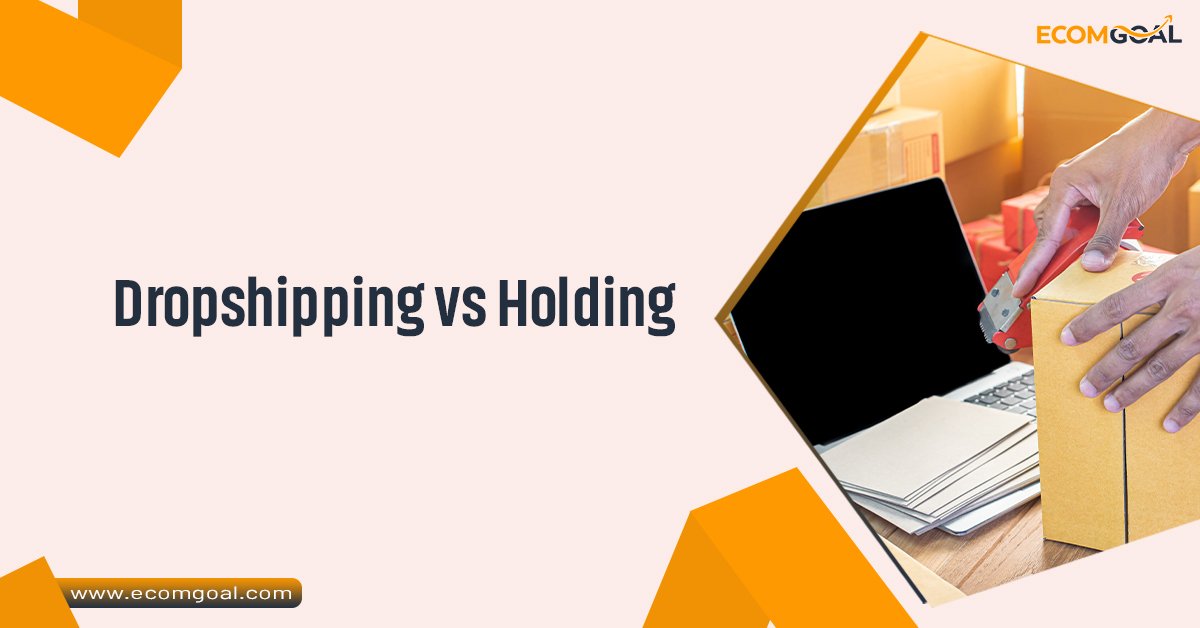
In the world of e-commerce, dropshipping vs holding one of the first decisions an entrepreneur faces is whether to pursue dropshipping or to hold inventory. Both methods have their pros and cons, and the choice can significantly impact your business model, costs, and scalability. This article dives into the key differences, advantages, and challenges of dropshipping vs holding inventory, helping you make an informed decision for your business.
What Is Dropshipping?
Dropshipping is a retail fulfillment method where a store does not keep the products it sells in stock. Instead, when a store sells a product, it purchases the item from a third-party supplier who ships it directly to the customer. The store owner never handles or sees the product.
Key Features of Dropshipping:
- Low Initial Investment: Since you don’t need to purchase inventory upfront, the barrier to entry is lower.
- Flexibility: You can sell a wide variety of products without worrying about storage.
- Minimal Overheads: Without warehousing and inventory management, operational costs are reduced.
- Scalability: Adding new products or entering new markets is easier and faster.
However, dropshipping also comes with its challenges, including limited control over shipping times, potential quality issues, and reliance on third-party suppliers.
What Is Holding Inventory?
Holding inventory refers to the traditional retail model where a business purchases products in bulk and stores them until they are sold. This method requires storage space, whether in a warehouse or physical storefront, and involves managing inventory levels.
Key Features of Holding Inventory:
- Greater Control: You manage product quality, packaging, and shipping.
- Branding Opportunities: Customized packaging and branding options enhance customer experience.
- Faster Delivery: With products readily available, shipping times are often shorter.
- Bulk Discounts: Buying in bulk can lower the cost per unit, increasing profit margins.
On the flip side, holding inventory involves higher upfront costs, storage expenses, and the risk of unsold products.
Comparing Dropshipping VS Holding
To decide between dropshipping and holding inventory, consider the following factors:
1. Startup Costs:
- Dropshipping: Requires minimal investment, as you only pay for products after making a sale.
- Holding Inventory: Involves significant upfront costs to purchase products and arrange storage.
2. Risk:
- Dropshipping: Lower financial risk since you’re not stuck with unsold inventory.
- Holding Inventory: Higher risk of overstocking or dead stock, which can result in financial loss.
3. Profit Margins:
- Dropshipping: Typically lower due to higher product costs from suppliers.
- Holding Inventory: Higher potential margins, especially with bulk purchasing.
4. Control:
- Dropshipping: Limited control over product quality and shipping.
- Holding Inventory: Full control over the customer experience, including quality assurance and delivery.
5. Scalability:
- Dropshipping: Easily scalable without worrying about storage or logistics.
- Holding Inventory: Scaling requires more storage space and logistical planning.
6. Customer Experience:
- Dropshipping: Longer shipping times and lack of branded packaging can affect customer satisfaction.
- Holding Inventory: Faster delivery and personalized touches improve the overall experience.
When to Choose Dropshipping
Dropshipping is ideal for:
- Beginners in E-commerce: If you’re testing the waters and want to minimize initial costs, dropshipping offers a low-risk entry point.
- Niche Markets: Dropshipping allows you to experiment with different niches without committing to bulk purchases.
- Limited Resources: If you lack storage space or the budget to invest in inventory, dropshipping can be a viable option.
- Global Reach: You can cater to international markets without dealing with cross-border logistics.
When to Choose Holding Inventory
Holding inventory is suitable for:
- Established Businesses: If you have a proven product and steady demand, holding inventory can maximize profitability.
- Brand-Focused Businesses: Companies that prioritize branding and customer experience benefit from greater control over their products.
- Fast Shipping Needs: Customers increasingly expect quicker delivery times, which holding inventory can provide.
- Cost Efficiency: For high-demand products, buying in bulk can significantly reduce costs.
Hybrid Approach: The Best of Both Worlds?
Many businesses adopt a hybrid approach, combining elements of both models. For instance, they may use dropshipping to test new products and hold inventory for bestsellers. This strategy minimizes risk while capitalizing on established demand.
Final Thoughts
Dropshipping vs holding, choosing between dropshipping and holding inventory depends on your business goals, budget, and resources. Dropshipping offers flexibility and low risk, making it an excellent choice for beginners and experimental ventures. On the other hand, holding inventory provides better profit margins, branding opportunities, and control, making it ideal for established businesses with steady demand.
Dropshipping vs holding, Evaluate your priorities, market conditions, and long-term goals to determine the best approach for your e-commerce journey. Whether you opt for dropshipping, holding inventory, or a hybrid model, success ultimately depends on delivering value to your customers.

Hello, I am an E-commerce Expert with extensive experience providing services to numerous e-commerce brands and individuals since 2017. My primary areas of expertise include the Amazon, Walmart, and Shopify marketplaces. Linkedin
